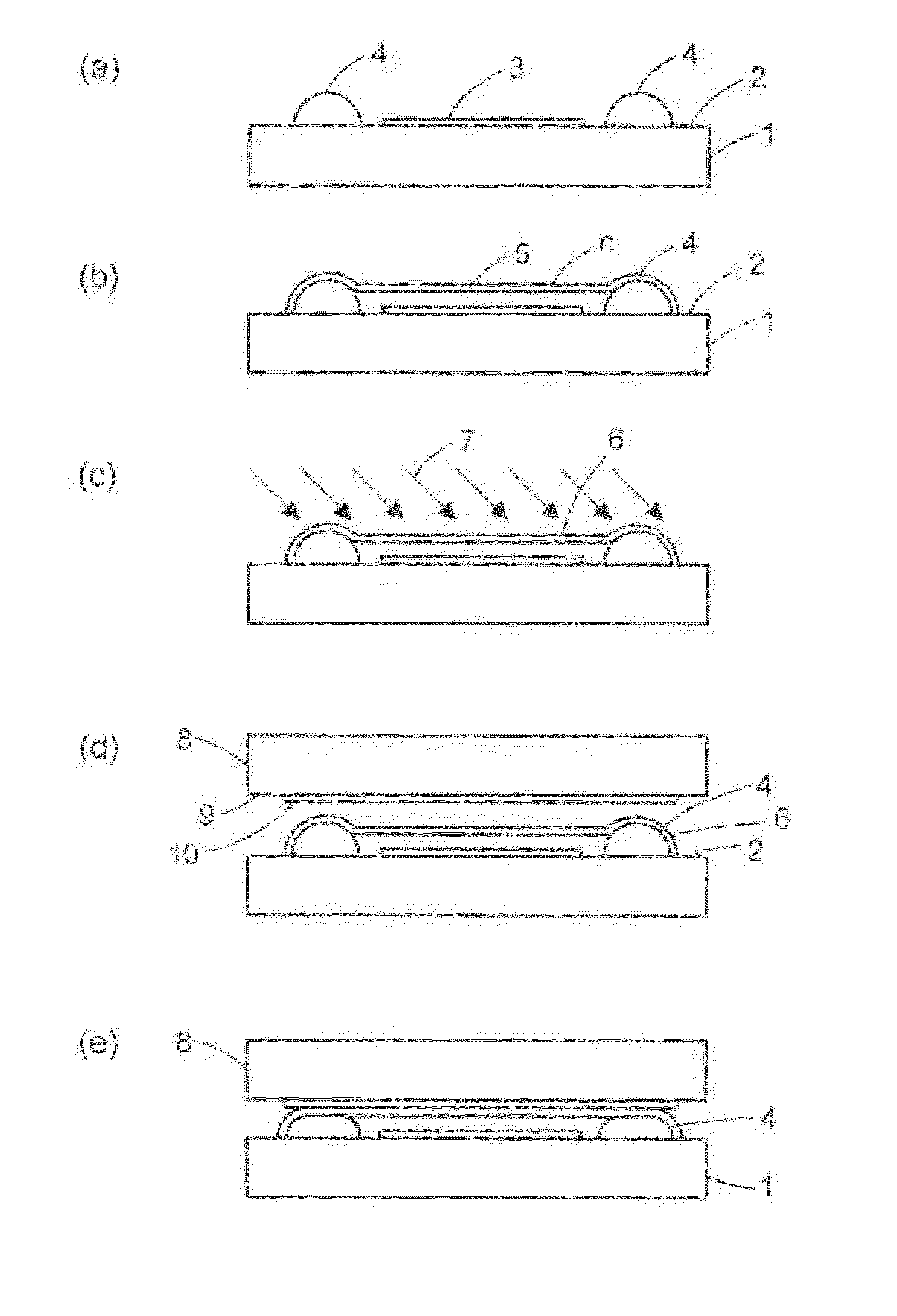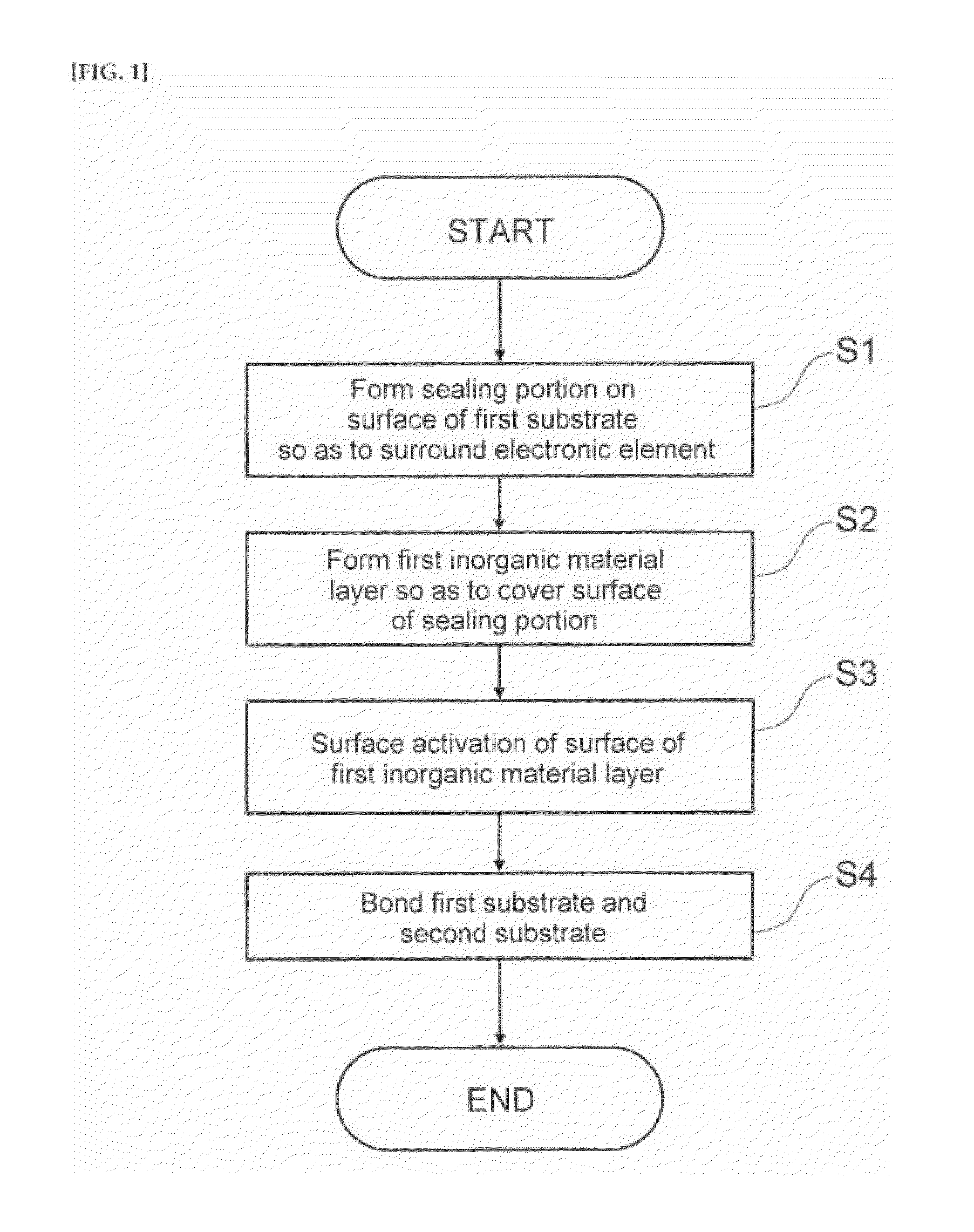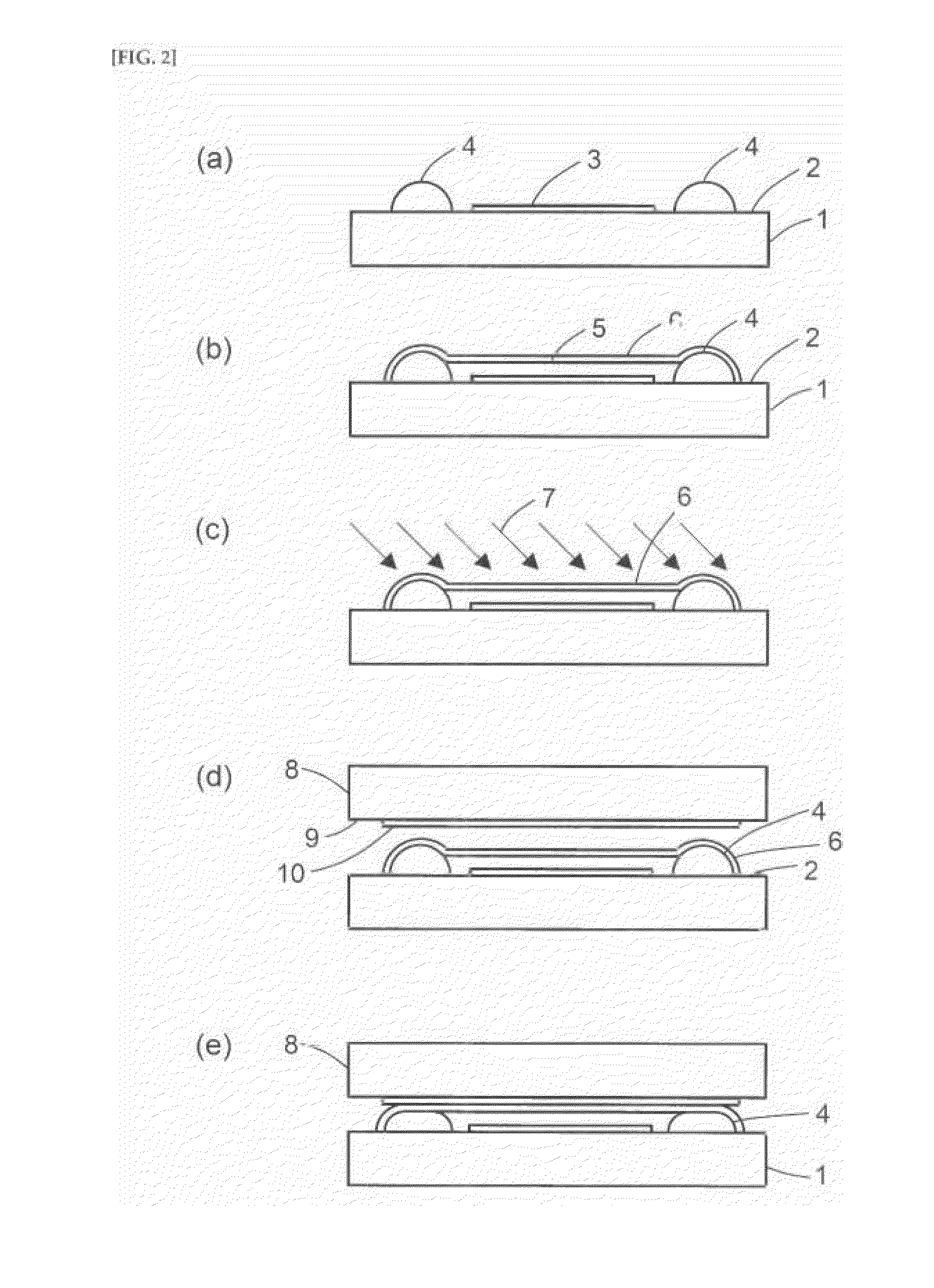Electronic element sealing method and bonded substrate
a technology of electronic elements and sealing methods, applied in the direction of electroluminescent light sources, semiconductor/solid-state device details, electroluminescent light sources, etc., can solve the problems of deterioration of the function of organic el elements, inability to sinter frit on the cover substrate side, and inability to form frit by sintering. to prevent the deterioration of electronic elements
- Summary
- Abstract
- Description
- Claims
- Application Information
AI Technical Summary
Benefits of technology
Problems solved by technology
Method used
Image
Examples
first embodiment
1. First Embodiment
[0038]FIG. 1 is a flow chart showing a method for sealing electronic elements according to a first embodiment of the electronic elements of the present invention. FIG. 2 is a schematic section view showing the steps in the method for sealing electronic elements according to the first embodiment of the present invention.
[0039]An electronic element 3 is formed on a face (first substrate side bonding face) 2 of a device substrate (first substrate) 1 facing the second substrate during bonding. A dam (sealing portion) 4 and a filling portion for covering the electronic elements are formed on the first substrate side bonding face 2 of the first substrate 1 so as to surround this electronic element 3 (step S1, FIG. 2(a)). A first inorganic material layer 6 is formed so as to cover at least the surface of the sealing portion 4 formed in step S1 (step S2, FIG. 2(b)). The surface of the first inorganic material layer 6 formed in step S2 is irradiated with particles 7 having...
modification example 1
1.7 Modification Example 1
[0080]Additionally, for example, the first inorganic material layer 6 may be formed by application onto the first substrate side bonding face 2 so as to cover at least the sealing portion 4 outside the area where the electronic element 3 is formed, as shown in FIG. 3(a). In other words, the first inorganic material layer 6 may be formed by application onto the surface of the sealing portion 4, without application over the electronic element 3, or so as not to cover the electronic element 3. In that case, application of the inorganic material layer to predetermined areas on the substrate is preferably avoided by using a predetermined mask during the step of forming the inorganic material layer. This may be followed by formation of the filling portion 5 over the electronic element 3 (FIG. 3(b)). Furthermore, it is preferable to form the electronic element 3 as a light-emitting element such as an organic EL element, to compose the second substrate 8 and the fi...
modification example 2
1.8 Modification Example 2
[0081]As shown in FIG. 4, the first inorganic material layer 6 may be formed by forming a sealing portion 4, then applying a first inorganic material 6 so as to cover the surface of the sealing portion 4 (FIG. 4(a)), next applying a filling agent so as to cover the electronic element, thereby forming a filling portion 5 (FIG. 4(b)), and subsequently applying a first inorganic material so as to cover the filling portion 5 (FIG. 4(c)). As a result, the entire surface of the filling portion 4 can be covered by the first inorganic material layer 6, so as to form a first inorganic material layer 6 on the inside and outside faces of the sealing portion 4 as seen from the electronic element 3. In other words, water or the like passing through the sealing portion 4 can be blocked by two first inorganic material layers 6, so as to block or inhibit the penetration of water or the like into the sealing portion 4 in the sealing structure formed by bonding. That is to s...
PUM
 Login to View More
Login to View More Abstract
Description
Claims
Application Information
 Login to View More
Login to View More - R&D
- Intellectual Property
- Life Sciences
- Materials
- Tech Scout
- Unparalleled Data Quality
- Higher Quality Content
- 60% Fewer Hallucinations
Browse by: Latest US Patents, China's latest patents, Technical Efficacy Thesaurus, Application Domain, Technology Topic, Popular Technical Reports.
© 2025 PatSnap. All rights reserved.Legal|Privacy policy|Modern Slavery Act Transparency Statement|Sitemap|About US| Contact US: help@patsnap.com



